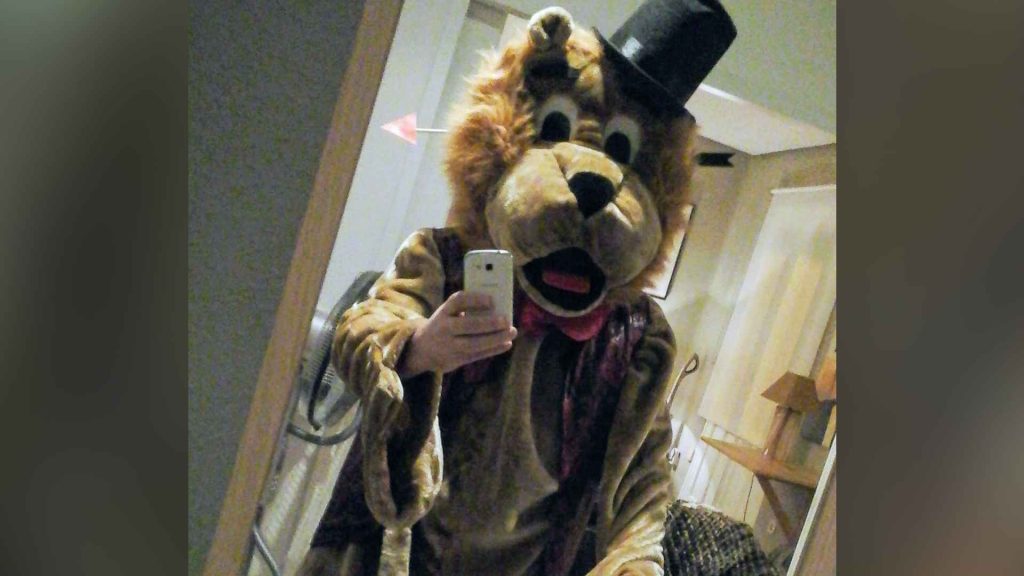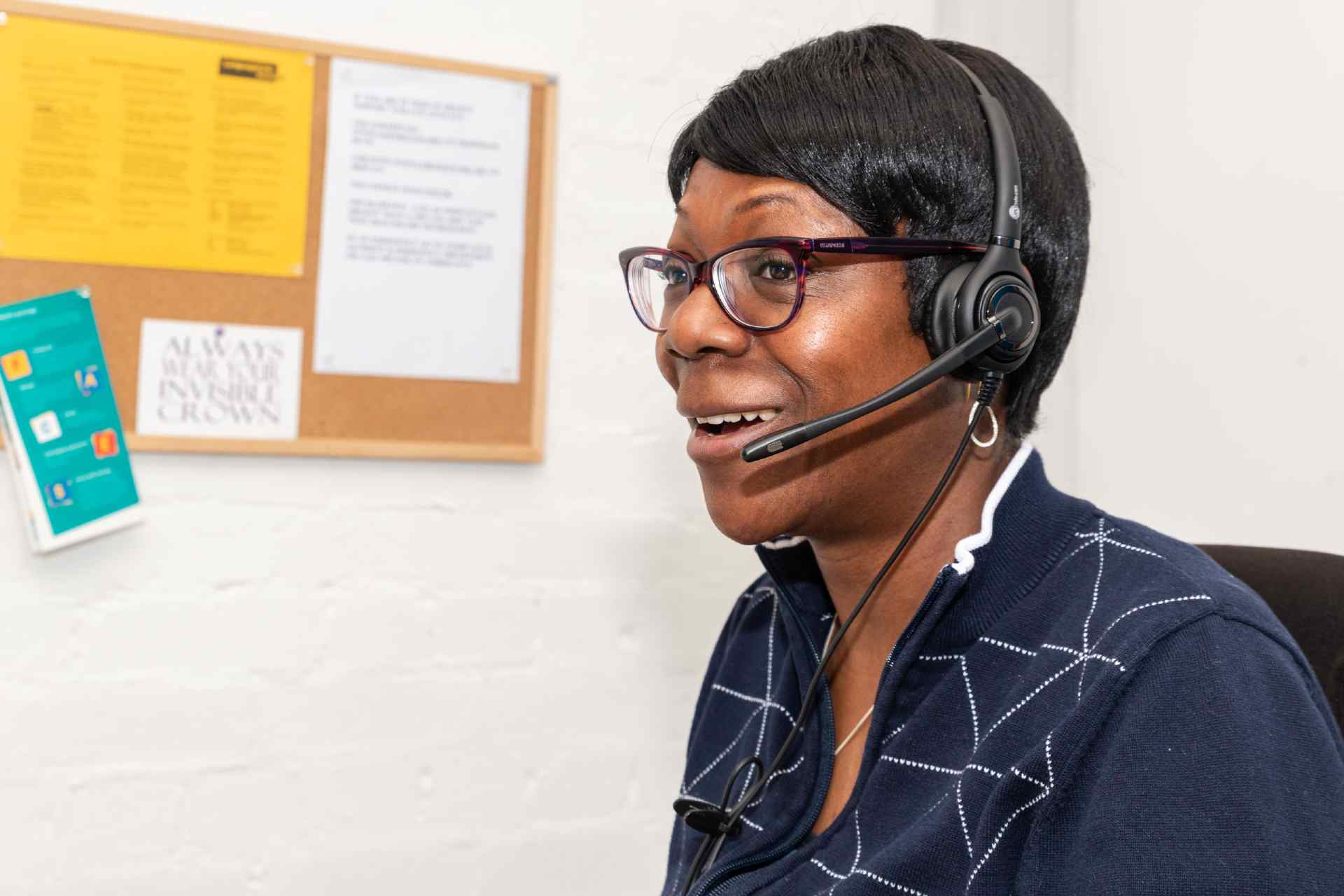A few years ago, the social highlight of every autumn was my American friend’s Halloween party. He went all out for this holiday and there was a dreaded expectation that you too went all out with your costume for the party. Over the years, I dressed up as Smiler the Clown, a zombie, and a dead surgeon just to name a few, and in the last party that I attended, the theme was dead celebrities. So, as Cecil the Lion had died that year, I donned a full theme-parkesque lion costume.

John as Cecil the Lion
This year I will again be dreading the Halloween season. Not because of the costume or the ghosts and ghouls, but because of the comments and stares I get about my appearance. In early 2022 I acquired a visible difference when I lost my right eye to cancer. It has resulted in a flap of skin being relocated to cover my socket after my eye was removed.
Shortly before the first Halloween after my surgery, I was getting on a bus when I heard screams from some young children upstairs. They had been watching me at the bus stop and as I reluctantly walked up the stairs of the overcrowded bus, I heard cries of “The scary Halloween man is coming up the stairs”.
The parents did nothing to stop them as I turned my back on the ongoing screams and shouts. Walking towards the back of the bus, I caught sympathetic glances and smiles from strangers. They were acknowledging what had happened and although I was grateful, I just didn’t want the attention. All I wanted to do was get home.
This is Halloween for me now. As it grows closer, I’m careful to stay away from families with children who so often associate a facial difference with Halloween. After all, this is what they’ve been conditioned to think. Each Halloween we see Freddy Krueger masks, prosthetics with scars, and other familiar villains being paraded around as costumes. Even a so-called superhero turned badass such as Deadpool contributes to the tired trope that villains have scars and anyone with scars are evil or those not to be messed with.
Thanks to Changing Faces, I’ve made many friends with visible differences, and they all deserve fairer and better representation, especially around Halloween.
It’s not their fault though. It’s what the media has taught us and before I was aware of the negative impact it could have, I also added visible differences to my costumes. When I dressed up as Smiler the Clown I was incredibly pleased with the ear-to-ear scar that formed Smiler’s smile – it took me three and a half hours to create, as I’d taken great care to make it look real and “scary”.
I look back at those photos with enormous discomfort. Not just because I’m now on the other side of it and have greater awareness of inclusivity, but because I contributed to the tired narrative that to be scary you must look different, whether through scars, marks or other conditions. Thanks to Changing Faces, I’ve made many friends with visible differences, and they all deserve fairer and better representation, especially around Halloween.
The media, supermarkets, and costume shops would have us believe otherwise. They glorify scars and facial differences as being something to fear. In October, the shelves are full of scar prosthetics, masks of movie villains, and “fun” foods mimicking body parts and faces. Last year, Aldi was selling chocolate eyeballs, a sight that for me was particularly triggering. All I wanted to do was my shopping, but I was forced to relive what had happened to me, and all because of some chocolate!
If you think “it’s all a bit of fun, it doesn’t matter”, think again. One of my own healthcare professionals upon seeing my prosthetic eye for the first time asked me if I was getting one for Halloween too! I’m not blaming her for what she said, we’ve all been conditioned to believe that we must look different in order to be scary during Halloween, and that’s what’s truly terrifying.
We can still have fun while being sensitive to those around us who may struggle with this time of year.
I pride myself on telling my story on my terms. Around Halloween, it feels like I cannot do this, as I’m forced to become a caricature of something “evil”. Some may use the term “snowflake”, and yes, I am more sensitive now, but why is it a bad thing to want to create more inclusive forms of representation for those living with a visible difference?
Imagine for a minute, if you were forced to face a trauma, or hide something about yourself while just going about your daily business, all because you were worried about what people might say. While everyone else is having Halloween fun, I am scared, not only about people’s reactions to me, but also how I might react to what I see.
I’d love to live in a world where shops sell more inclusive costumes. Where supermarket food doesn’t mimic eyeballs or so-called funny faces. I’d love to see a brand pledge to drop this tired trope from future products. Unfortunately, as long as people continue to buy into this each year, I don’t see it changing. That’s why I encourage everyone to find more inclusive ways of celebrating Halloween.
Nobody needs to buy into the false narrative that scars make us scary. Help children to see that it can be fun to dress up as a character that doesn’t appropriate a visible difference. Themed Halloween food doesn’t need to look like a body part. We can still have fun while being sensitive to those around us who may struggle with this time of year.
Remember Cecil the Lion? Well, he won first place in the costume competition that year without a single scar in sight. That’s how I’d like to see Halloween. Inclusive.

